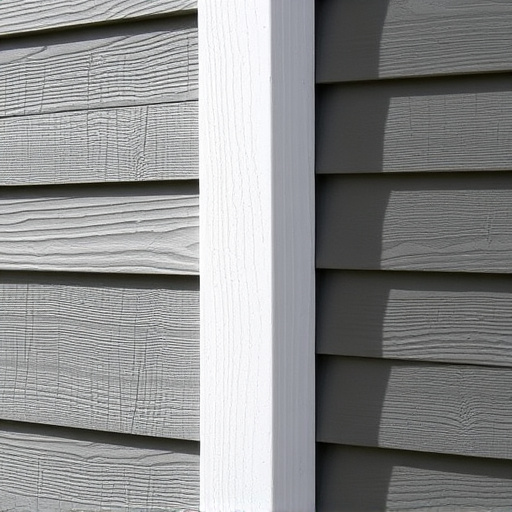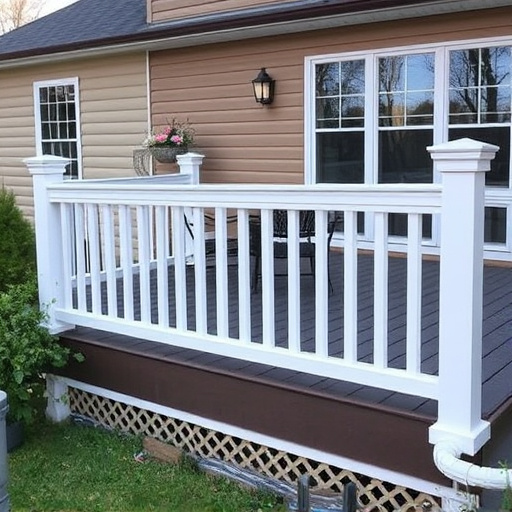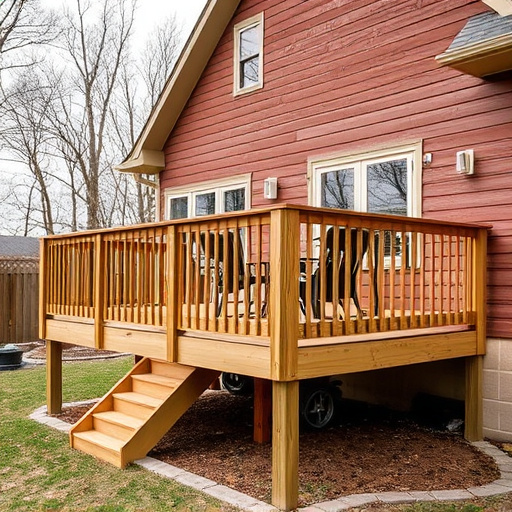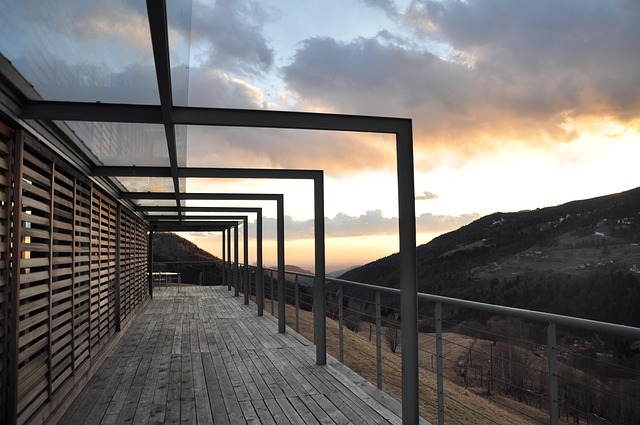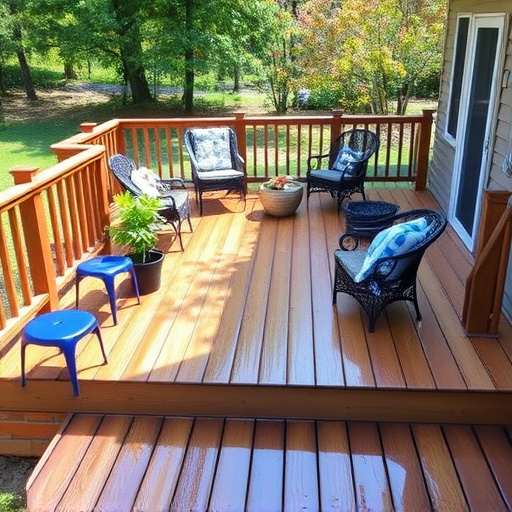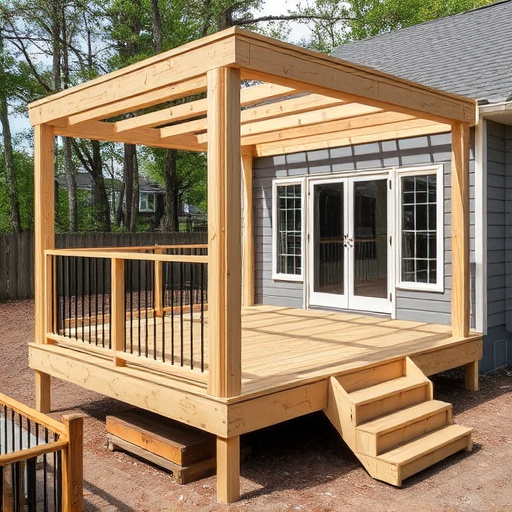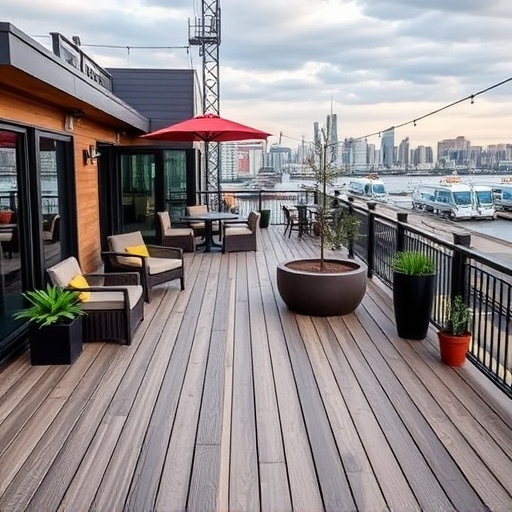Designing a multi-level deck with sustainability in mind involves using eco-friendly materials like recycled plastics and reclaimed wood to reduce environmental impact. Incorporating natural finishes, proper drainage, and efficient water management makes these decks low-maintenance while preserving local ecosystems. Consulting roofing experts ensures sustainable construction practices for a greener living space.
Creating a sustainable multi-level deck involves choosing eco-friendly materials and design strategies. As outdoor living spaces evolve, so does the demand for durable and environmentally conscious structures. In this article, we explore the diverse range of options available for building multi-level decks, focusing on sustainable materials like wood and recycled plastics. We also delve into design considerations that enhance both aesthetics and ecological responsibility, guiding you towards a greener deck construction.
- Exploring Eco-Friendly Options for Multi Level Decks
- Sustainable Materials: From Wood to Recycled Plastics
- Design Considerations for an Eco-Conscious Deck
Exploring Eco-Friendly Options for Multi Level Decks
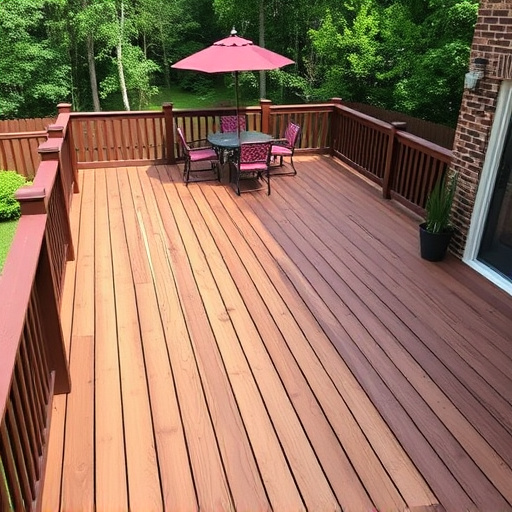
When designing or renovating a multi-level deck, there’s an increasing emphasis on sustainability and eco-friendly practices. This shift is not just a trend but a necessity to preserve our environment for future generations. One significant aspect of this movement involves exploring materials that offer both aesthetic appeal and reduced environmental impact. The traditional options for decking often include wood, composite materials, or concrete, each with varying degrees of sustainability.
A multi-level deck presents an opportunity to integrate eco-friendly solutions seamlessly. For instance, using recycled materials like plastic or bamboo can significantly reduce the carbon footprint associated with typical decking. Moreover, these materials are durable and require less maintenance over time, which translates to long-term savings for homeowners and reduced waste in landfills. In addition to decking, considering environmentally conscious options for roofing and siding—such as metal or energy-efficient commercial siding—can further enhance the deck’s sustainability profile, contributing to a greener living space.
Sustainable Materials: From Wood to Recycled Plastics
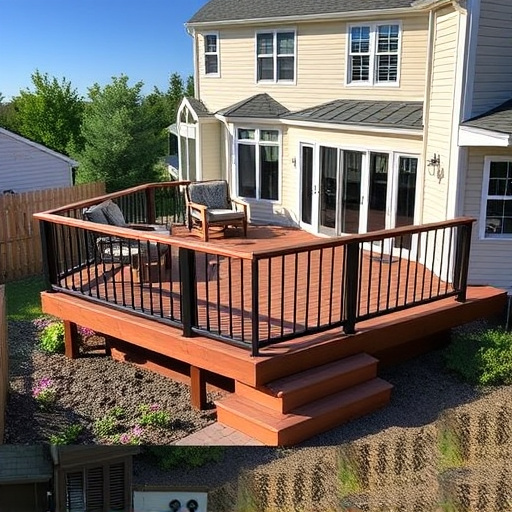
When designing a multi-level deck with eco-friendliness in mind, one must explore a variety of sustainable materials that offer both durability and environmental responsibility. Traditional wood decking has long been a popular choice for exterior home improvements, but it’s important to note that not all woods are created equal in terms of sustainability. Many forests face the threat of deforestation, leading to concerns about the sourcing of wood. As a result, many eco-conscious homeowners and contractors are turning to alternative materials like recycled plastics.
Recycled plastics, often derived from commercial roofing waste or other post-consumer products, present an innovative solution for multi-level decks. These materials offer exceptional strength and longevity while significantly reducing environmental impact. By utilizing recycled plastics, home service solutions can be provided with deck systems that resist rot, warping, and pest damage—features essential for any exterior structure. Furthermore, the use of recycled content contributes to a circular economy, encouraging a sustainable approach to both construction and material management in the ever-growing landscape of residential and commercial roofing applications.
Design Considerations for an Eco-Conscious Deck
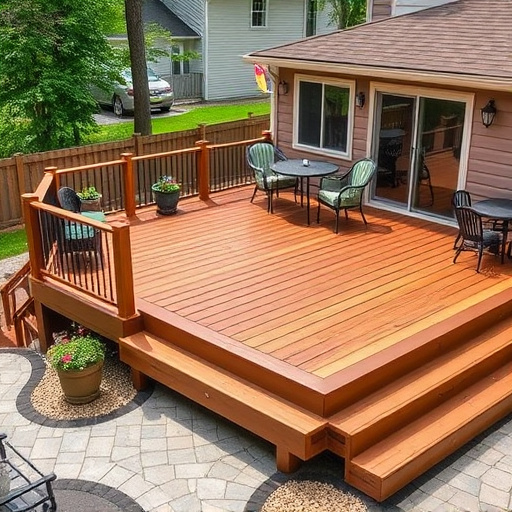
When designing a multi-level deck with sustainability in mind, the initial focus should be on selecting eco-friendly materials that are both durable and aesthetically pleasing. One key consideration is choosing decking boards made from recycled or reclaimed wood, which reduces the demand for new timber and minimizes waste. These boards often come in various styles, ensuring an attractive finish without compromising environmental ethics.
Additionally, incorporating natural, non-toxic finishes and sealing agents can enhance the deck’s longevity while maintaining a healthy environment. Proper drainage and landscaping around the deck are also essential design elements. Efficient water management systems, such as permeable siding services or creative planting beds, can prevent water runoff and support local ecosystems. Consult with roofing experts to implement these strategies, ensuring your multi-level deck is not only an eco-conscious addition but also a functional, low-maintenance space.
Constructing a multi-level deck with eco-friendly materials is not only aesthetically pleasing but also environmentally responsible. By opting for sustainable options like reclaimed wood, recycled plastics, and eco-conscious design principles, homeowners can create a stunning outdoor space while minimizing their carbon footprint. Embracing these green alternatives ensures a harmonious blend of nature and modern living, setting the stage for a beautiful and sustainable future.






